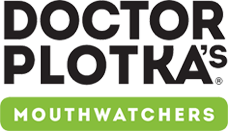If you or someone in your family wears braces, you know that maintaining oral hygiene can be a bit of a challenge. Braces provide additional nooks and crannies for plaque and food particles to get trapped, making it harder to keep your teeth clean. However, with a little extra effort and the right tools, you can keep your teeth and braces clean and healthy.
Your Dental Routine Matters
Using a water flosser or “waterpik” can be an excellent start to your oral hygiene routine, especially if you have braces. This device uses a stream of water to clean between your teeth and around your braces, flushing away food particles and plaque that your toothbrush might miss. For those with braces, a water flosser can be a great way to clean those hard-to-reach areas around brackets and wires. Just be sure to follow the manufacturer's instructions and adjust the water pressure to a comfortable level to avoid causing any damage to your braces or gums.
One of the most important tools in your oral hygiene arsenal is a good toothbrush. Manual toothbrushes are a great option for people with braces, and Mouthwatchers offers a toothbrush that's specifically designed to clean around braces. The bristles are ultra-soft and infused with silver, which has antimicrobial properties, making it perfect for those with braces who are more susceptible to plaque buildup and gum disease.

When brushing with braces, it's important to be thorough and gentle. You should spend at least three times longer brushing your teeth than you normally would, paying special attention to the areas around your braces.
In addition to brushing, flossing is also essential for maintaining good oral hygiene with braces. Flossing with braces can be a bit tricky, but with a little practice, you'll get the hang of it. You can use waxed floss, dental tape, or a product specifically designed for braces, like Oral-B Superfloss, which is self-threading. Be sure to floss at least once a day, using about 18 inches of floss and threading it carefully under the main wire of your braces before passing it between two teeth.

Don't snap the floss, but move it up and down gently against the side of each tooth. Not sure about flossing? That’s okay - using Mouthwatchers manual toothbrushes can help eliminate the need due to our superior multi-layered flossing bristles!
Children's Checklist For Braces
If you have a child with braces, it's important to establish good oral hygiene habits early on and help them. Not sure where to start? We’ve put together a few bullet points to help you on your way:
- Before brushing, have your child take off any elastics or removable parts of their orthodontic appliance.
- To clean braces, instruct your child to use a toothbrush held at a 45-degree angle to remove plaque and debris around wires and brackets. Brush from the top of each wire down to the bottom, working around both upper and lower teeth.
- Removable braces should be cleaned over a sink filled with water to avoid damage if dropped.
- Show your child how to use interdental brushes to clean between their teeth and braces, following product instructions or guidance from a dental professional. Consider using interdental products specifically designed for braces and orthodontic work, such as single-tufted toothbrushes or floss.
- Braces increase the risk of tooth decay, so it's important to keep your child's teeth clean with a good toothpaste. Encourage brushing 2-3 times a day, preferably after meals.
- After brushing, instruct your child to spit out the toothpaste but not rinse their mouth. Rinsing washes away the minerals that can help strengthen teeth.

In addition to maintaining a thorough oral hygiene routine, it's important to see your orthodontist for checkups and adjustments. Your orthodontist can repair broken pieces, answer any questions you may have, and address any issues like cavities or gum disease.
